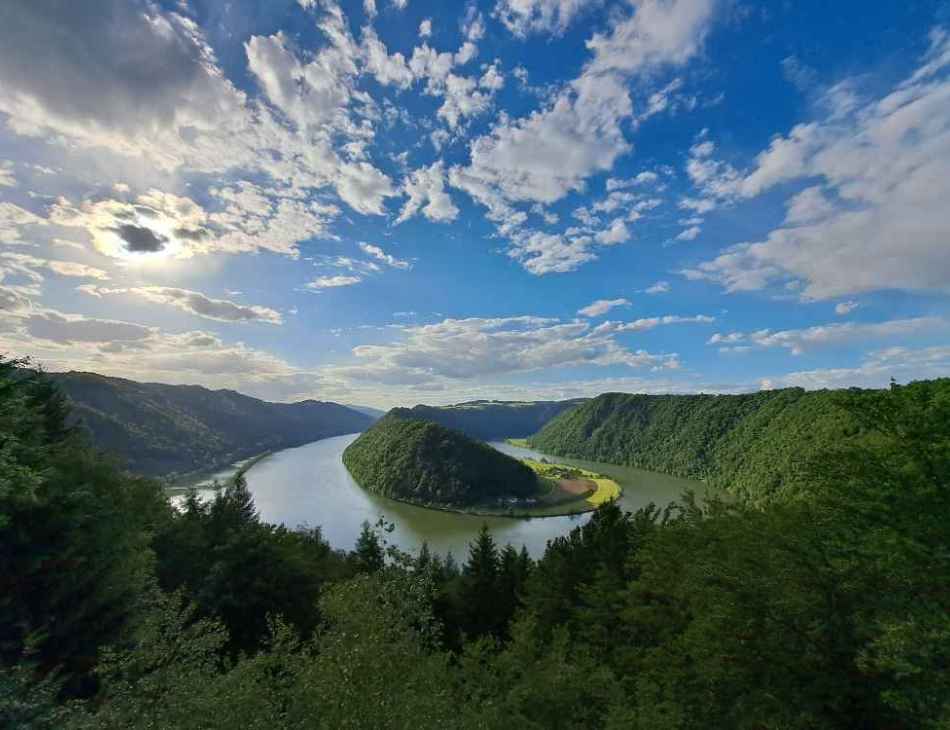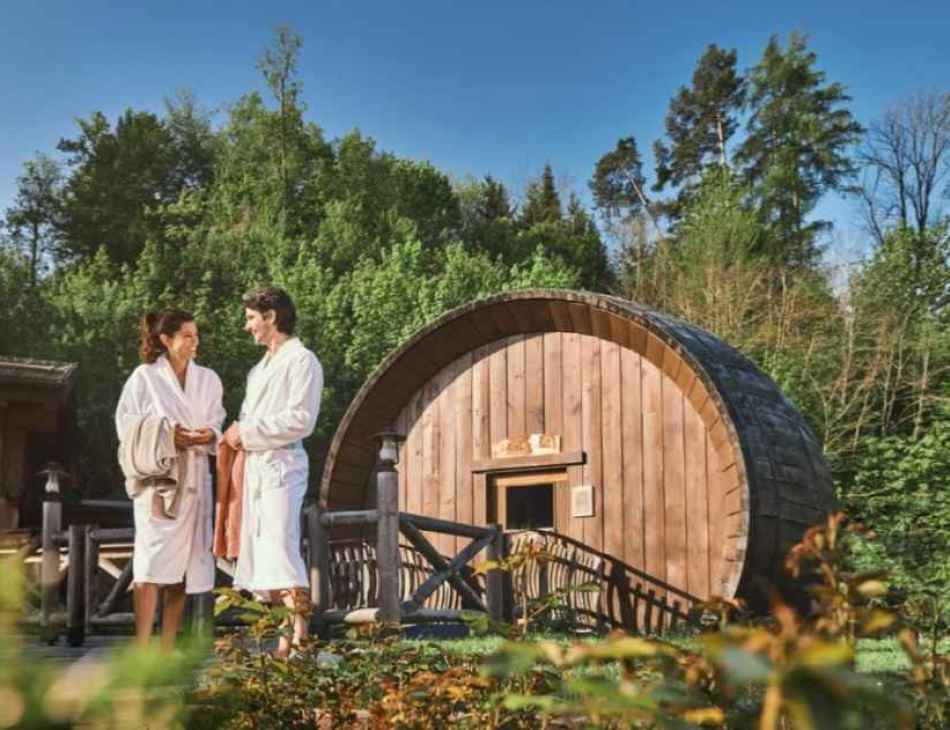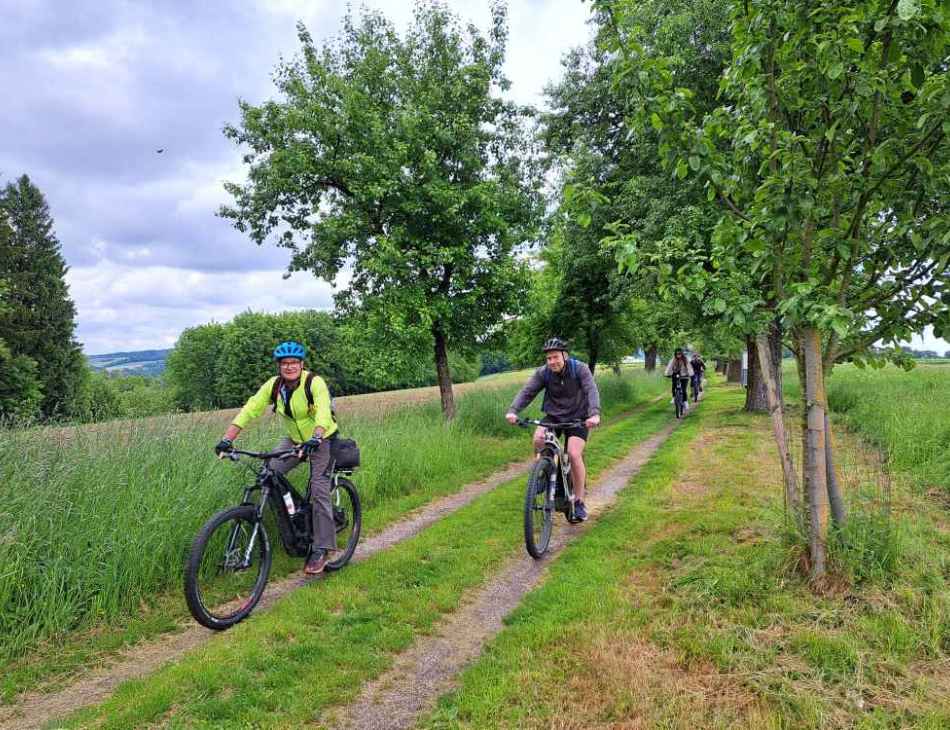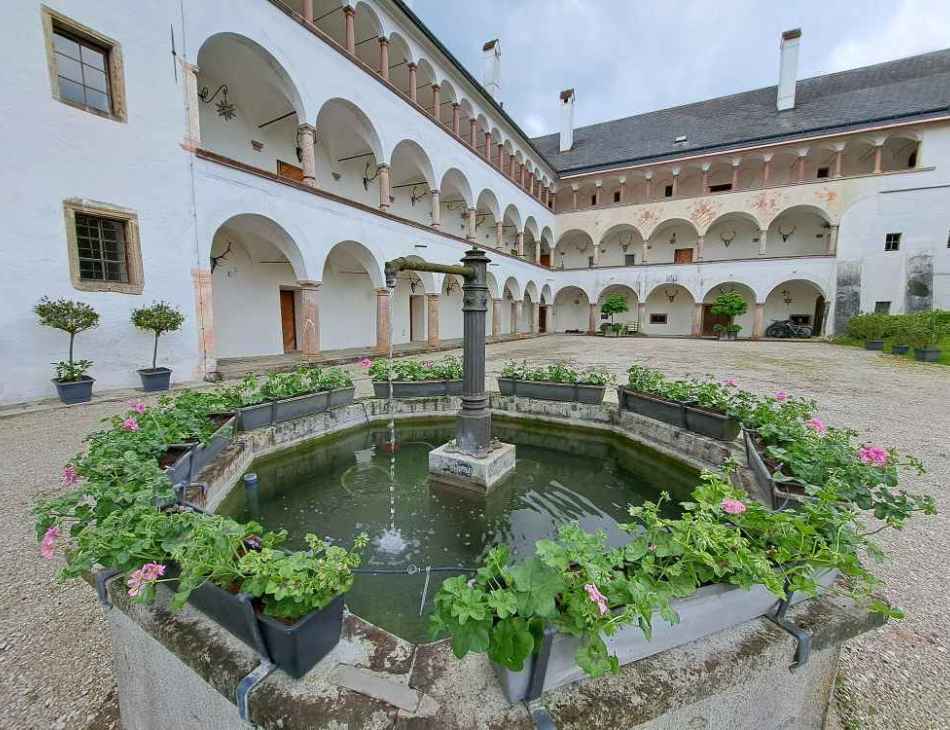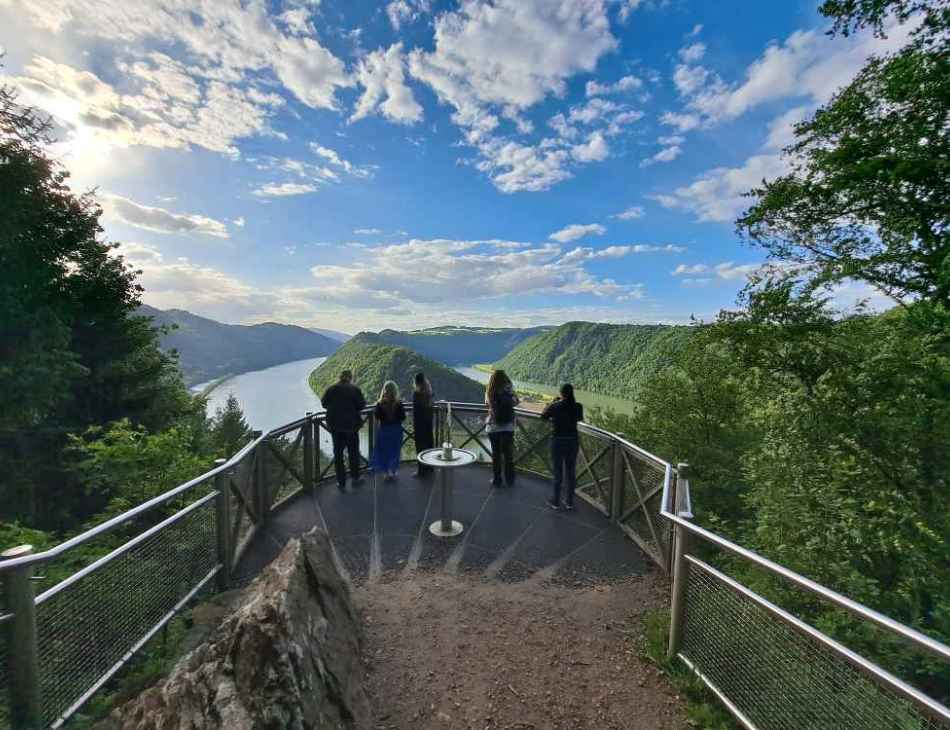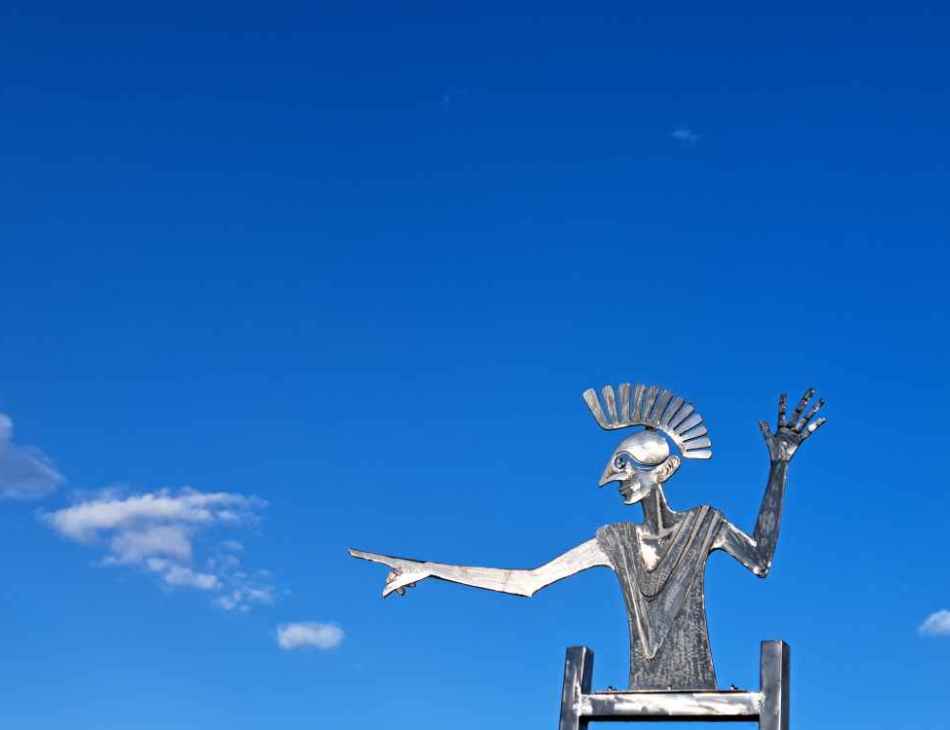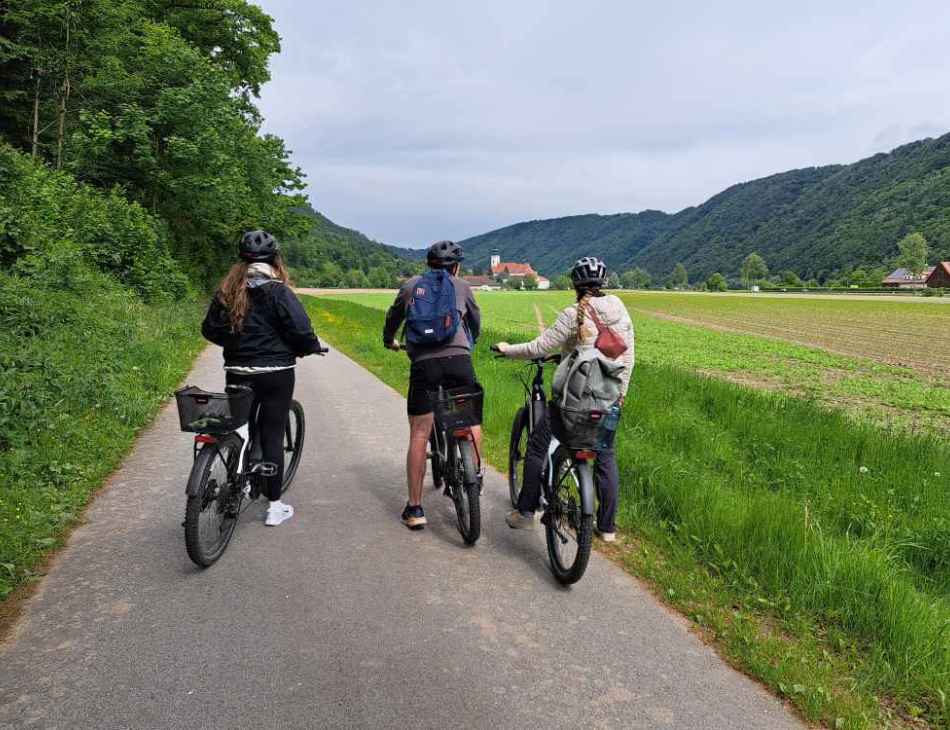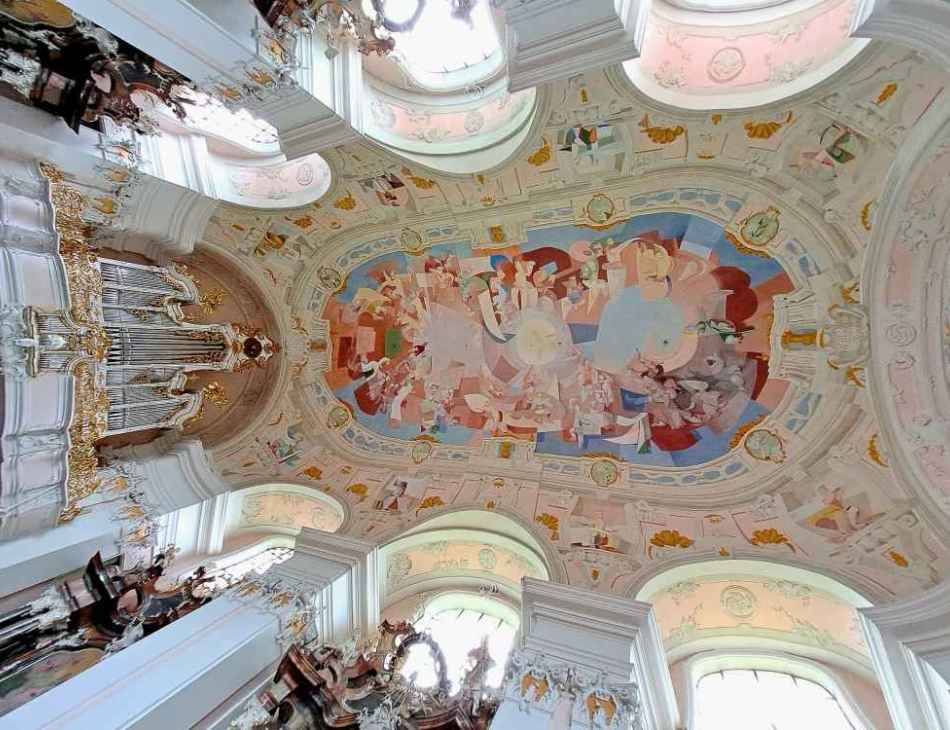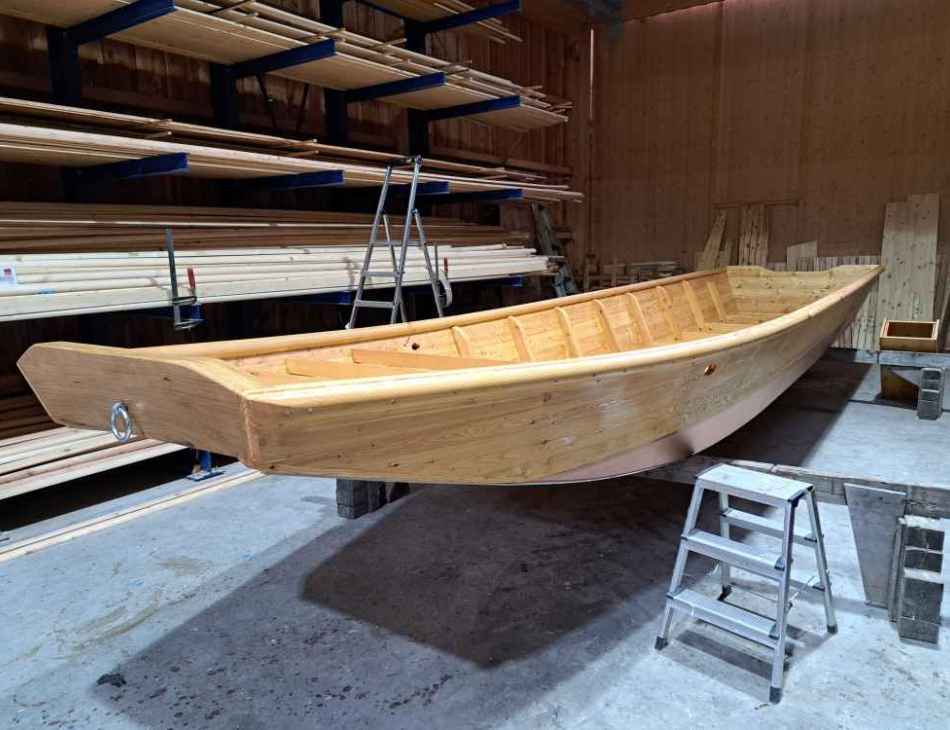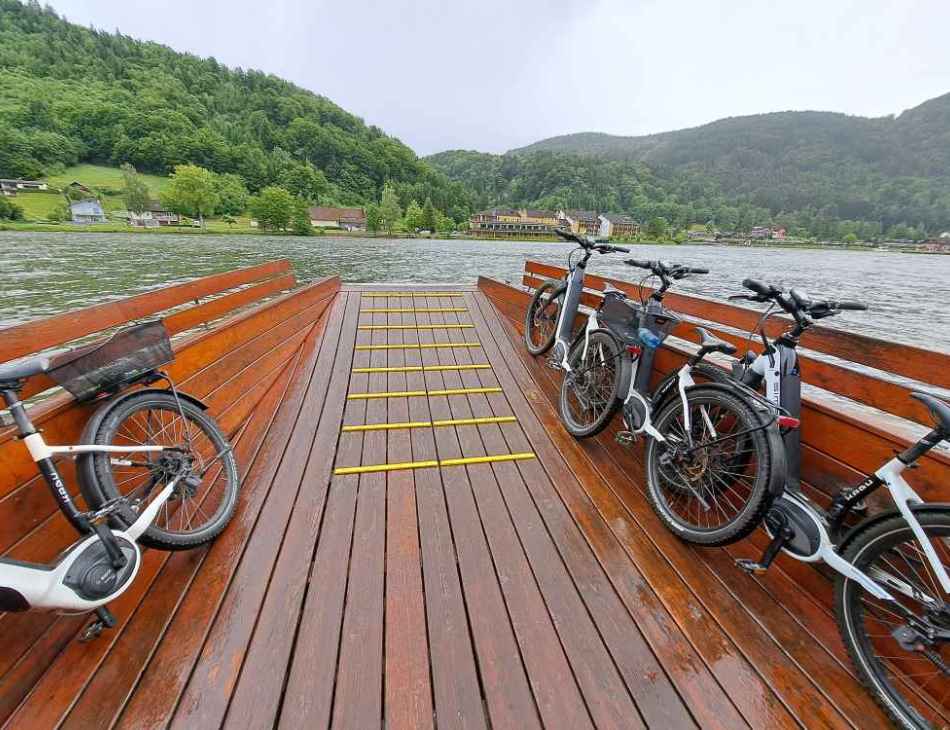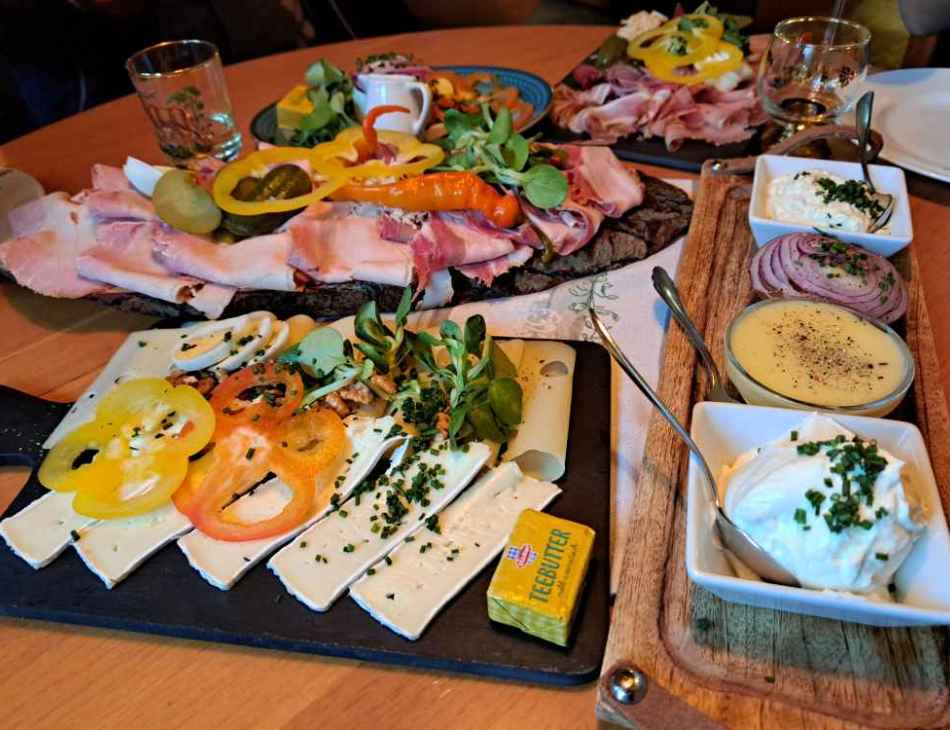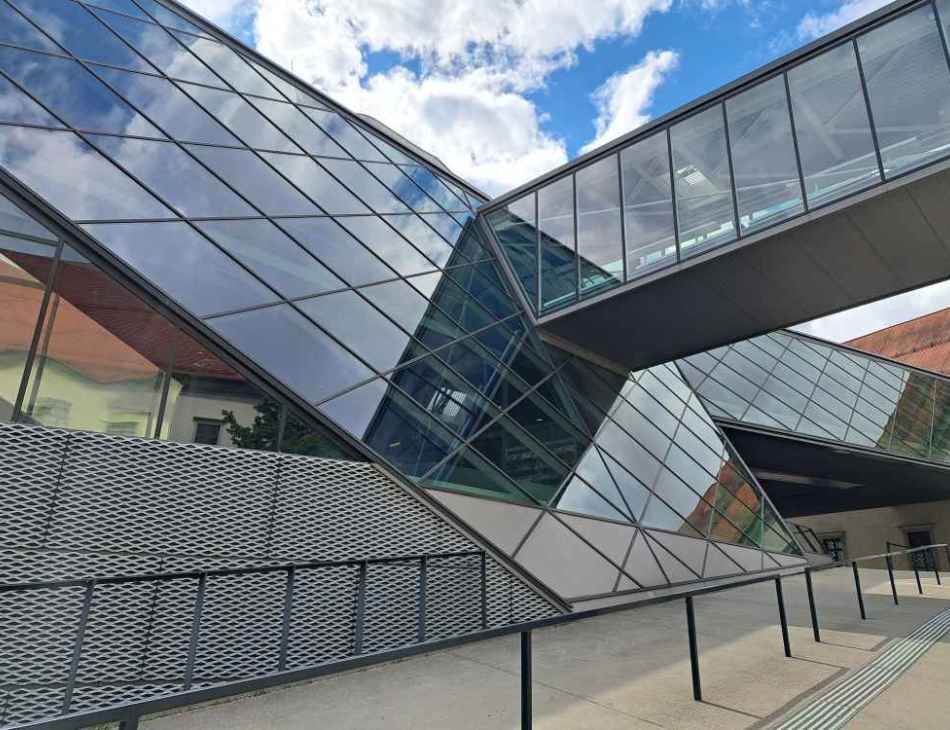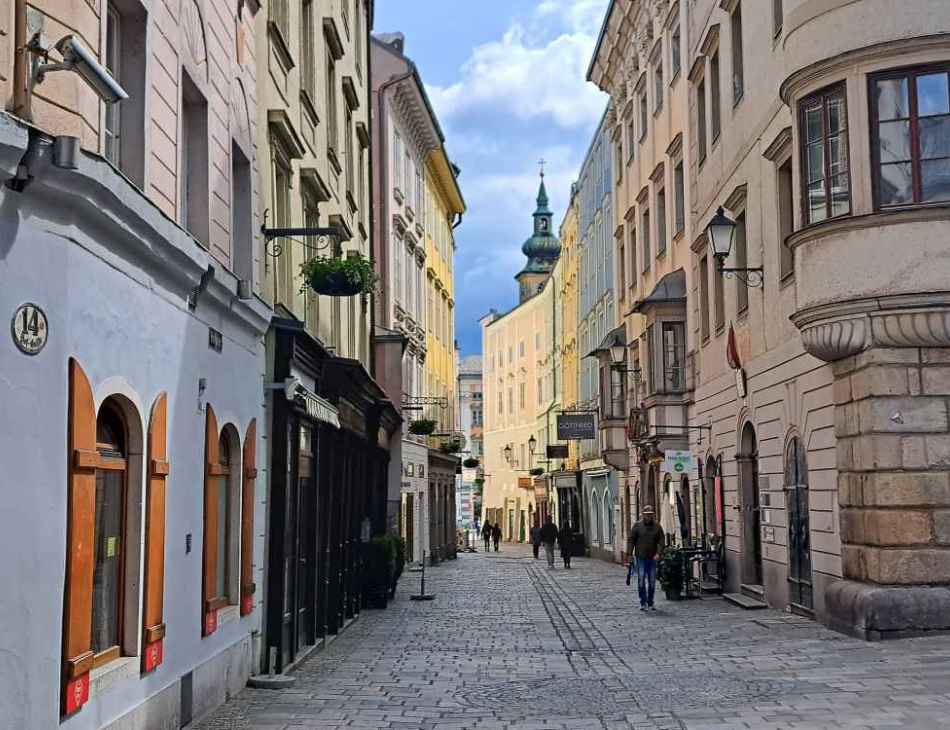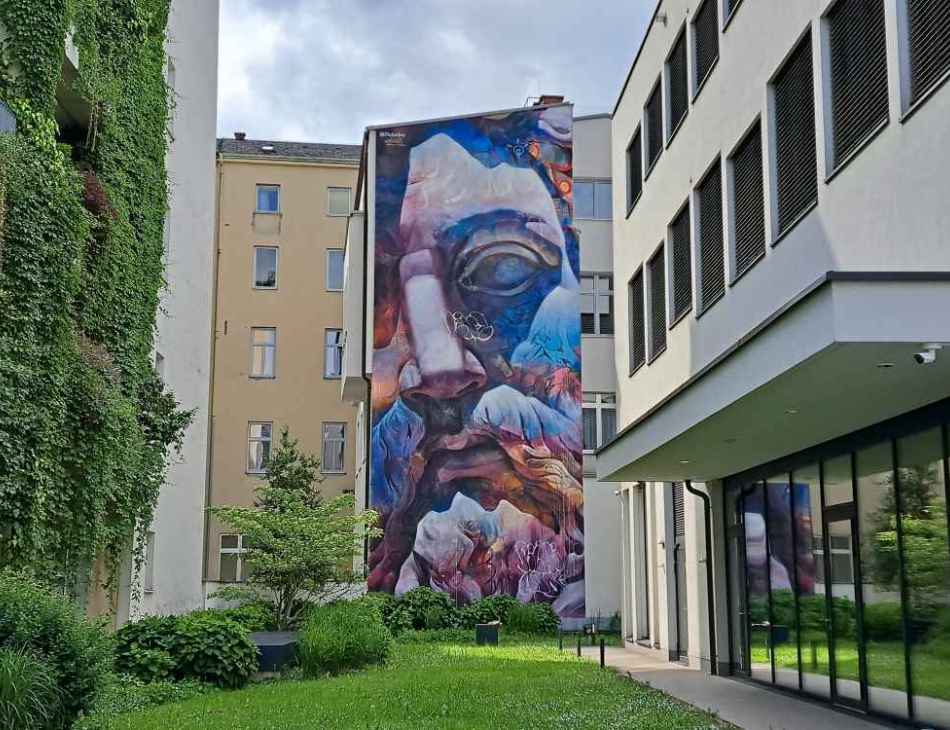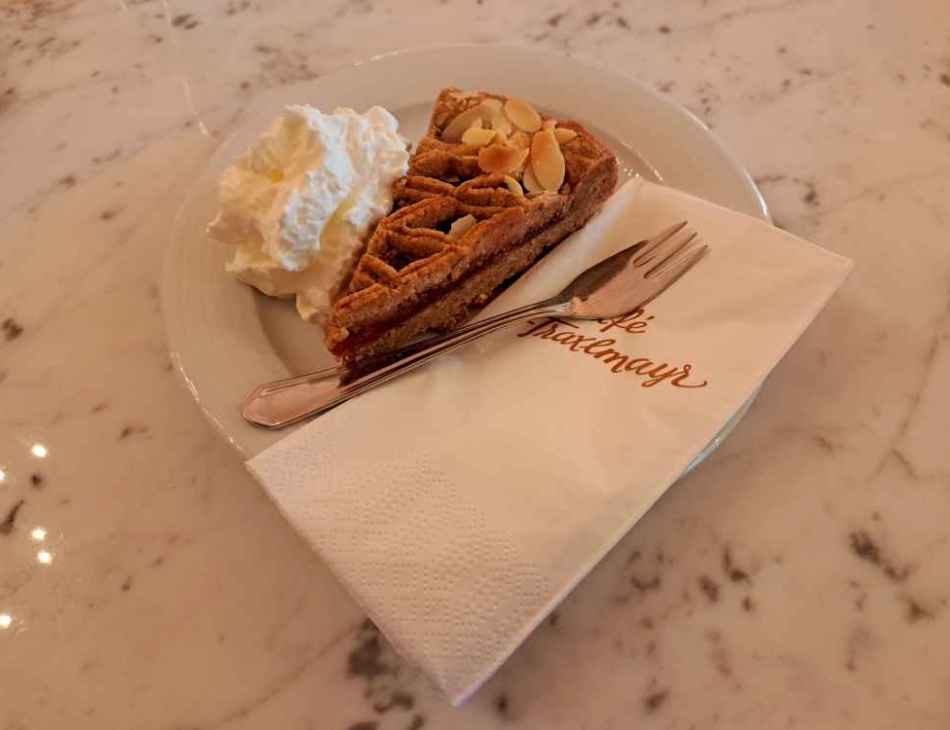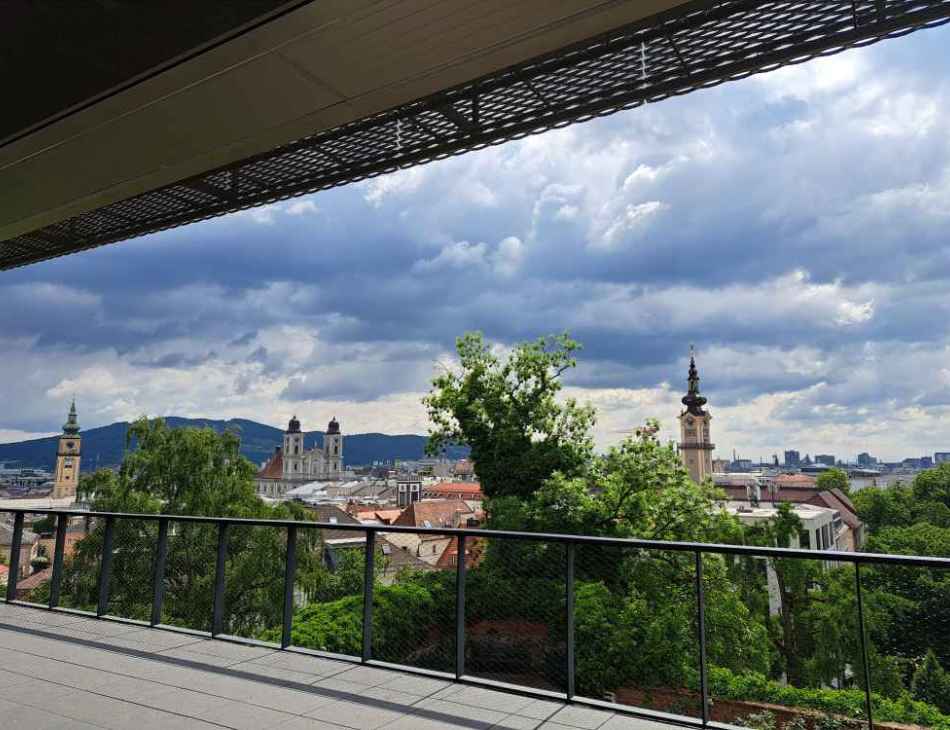DANUBE DREAMING: FROM SCHLÖGEN’S CURVES TO LINZ’S LIGHTS
Ryanair’s new service to Linz, gave Ramy James Salameh the perfect opportunity to discover Upper Austria’s charms by e-Bike, taking in the Vitalwelt region, the mighty Danube river and the edgy regional capital along the way.
Schlögen Danube View
Sitting in the world’s largest cider barrel sauna - Mostfassl – with fifty other naked strangers may seem at the very least, alternative. Yet, in Upper Austria, this is just another way to experience one of the region’s most popular products.
Our sauna-master poured cider onto the coals, followed by matador-like wafts of his towel, sending waves of heat and the very pleasant aroma of cider onto our sweaty faces. This sauna ritual continued with the sampling of regional ciders, with trays being passed between patrons of this makeshift watering hole.
If cider is not your thing, then the EurothermenResort in Bad Schallerbach, offers plenty more obscure ways to keep mind and body in optimal condition. Sit back, in a Swedish-style sauna cabin, complete with built-in oven from which another sauna-master expertly times his session against that taken to bake bread. Intermittently, he leaks heat and bakery-like infusions from the oven, into the confined space, before sharing-out the freshest of produce.
These are just some examples of why the Upper Austria region is truly authentic and radiates slow travel, wooing bikers to hikers and foodies to culturists into exploring the lush rolling countryside or following the snaking meander of the mighty Danube.
Mellow meadows and farmsteads by e-Bike
It was on two-wheels of an e-bike, following the tracks and trails of the Vitalwelt, of which Bad Schallerbach forms part, where the beauty and another kind of warmth from Upper Austria really unveiled itself.
With the help of our bike guide Ernst Steger, we immediately shifted into higher gears, as we ascended to Schallerbach's Magdalenaberg Church, where the soft voice of a chorister escaped from a crack in the ancient wooden door as we passed by. In the sky above, a falcon hovered effortlessly, drawing attention away from the townscape below and encouraging us to explore further into nature.
Flower meadows, open pastureland and farmsteads with creaky barns framed our route, seemingly unchanged over the centuries, all combining to provide a sense of peaceful wellbeing. After several kilometres of varying terrain and natural habitats, Ernst pointed out the school in which he teaches, which meant we were on the outskirts of his town, Greiskerchen, “soon I am retiring and this will give me more time to do more bike guiding” he said with a gleeful grin, “I would also like to invite you for coffee at my home”.
To get there we passed the school's modernist architecture of utilitarian concrete, which seemed quite in contrast to the town's historic centre of ornate low-rise buildings, which skips between the gently flowing Trattnach River, beside which cosy parks and riverside trails led us to his front door.
Seated upon his patio, again watching a bird-of-prey swoop and dive in the distance, we mentioned our dinner the night before at ‘Mostheuriger Am Hochfeld’ a ‘Heuriger’ (traditional cider tavern) perched on a hillside above Bad Schallerbach with far reaching views across the Hausruck region: “Oh yes, I know the owner very well” Ernst stated “we eat there sometimes”.
It seemed most locals know of the restaurant, not just for its cosy rustic atmosphere, but courtesy of the ingredients from which they make their homemade cold platters of cured meats, cheeses, spreads, pickles and of course fresh ‘Most’ – apple cider and juice, all procured from small-scale local producers.
As soon as Ernst heard of our cider-tasting experience in Am Hochfeld, a jeroboam-sized bottle of cider was placed at the centre of the table “this is homemade by one of my friends, he gives me this gift every year, please try”.
On our return to Schallerbach, more highlights appeared, including the 16th Century frescoes adorning the façade of Parz Country Castle and the 2.5km St. Georgen Orchard Avenue; some 450 fruit trees arched over our heads, its verdant canopy dappling light between its blossoms. This grass covered trail felt as straight as a Roman road; it lays claim to be Austria’s longest orchard avenue and bearer of rare fruit varieties. This was an excellent way to end our stay in the Vitalwelt and move closer to the Danube to uncover some real Roman antiquity.
The Magnetism of the Danube River
A visit to Schlögen Donaublick is essential; arguably the most dramatic natural viewpoint along the Danube’s 2,857 km. Emerging from spruce forest onto the viewing-platform, we collectively exhaled at the sight of the Schlögener Loop, where the river’s sinuous curve bends nearly 180 degrees between lush, forested hills and is so dramatic it was easy to see why the Romans once recognized its strategic value, establishing a port and settlement here.
From this vantage point, our 30km e-bike journey along the Danube Limes World Heritage Route was to begin, guided by the plume-shaped emblem of a Roman centurion’s helmet marking the many points of interest. This route, crossing the river twice, delves into archaeology, nature, history and modern art. At Schlögen, the discovery of a gold coin in 1837 led to the excavation of a Roman bathhouse, whose complete ancient structure is now viewable via augmented reality using a QR code and smartphone.
Continuing in the footsteps of former Roman legions who once patrolled the banks of the Danube, we rode onto Burgus Oberranna, a UNESCO-listed Roman fortification brought to life, again, through virtual reconstructions and this type of structure formed part the northernmost frontier of the Roman Empire. Across the Danube the forested lands once known to Romans as “Barbarian” territory lay in wait for us. Before we switched river banks we visited the zero-energy Schütz Art Museum, with contemporary exhibits and artists in residence, and the Cistercian Abbey of Engelszell, Austria’s only Trappist monastery, home to a lone monk and famed for its Trappist beers, liquors and Fritz Fröhlich’s 1950s cubist fresco adorning the ceiling of the Abbey.
Finally, crossing by ferry, we returned upstream along narrower paths full of natural character and leading us to Witti, a ninth-generation family-business of traditional boat manufacturers who can trace their family craft back to the 16th century. Using spruce or larch wood and using designs typical to the region, they masterfully build these handmade ‘Zille’ flat-bottom wooden Danube boats. With the aroma of wood-chip in our nostrils, this was the final cultural twist to our immersive journey.
Illuminated by Linz
A short train ride from Bad Schallerbach brought us to Linz, where the city lights slowly came into view. This UNESCO City of Media Arts is a hub of contemporary creativity, digital innovation, and alternative culture, all woven into its natural and historic backdrop. Immediate impressions was it offered something refreshingly different from neighbouring Vienna and Salzburg.
By night, two of the city’s cultural landmarks, the Ars Electronica Centre and Lentos Kunstmuseum pulsate with LED lights across their façades. Facing each other across the Danube, these icons of modernist architecture showcase cutting-edge digital technology, futurism and art, including works by Klimt and Schiele. The best view of these glowing structures is from the Pöstlingberg mountain, where our guide Silvia Mayr-Pranzeneder began our tour.
We reached the summit via a vintage tram dating back to 1898, which winds its way gently upward from the main square, passing Anton Bruckner University and the city zoo. At the top, we stood beside the old fort and Pilgrimage Basilica just as its bells rang out, accompanied by a local marching band celebrating a group of children receiving their first communion. “You’re lucky to witness this pageantry today” Silvia remarked, before we turned to take in the sweeping panorama of Linz and the Alps beyond.
From here, Linz’s layered history unfolds; the site of an ancient Roman fort, the compact Altstadt (old town), and the vast steel plant built under Hitler in 1938, which later made the city a major WWII target were all visible. On our descent, we visited Mariendom (New Cathedral), where light filtered through stunning stained glass windows, illuminating the interior with soft, colourful patterns, a quiet testament to the city’s blend of spirituality and artistry.
Back in the Hauptplatz (main square), built in 1230, we wandered through a rich mix of Baroque façades, renaissance courtyards, and medieval cellars. Narrow, cobbled alleys led us to elegant cafés and independent shops, including our destination: Café Traxlmayr. Established in 1847 and run by the same family since 1872, the café retains its early 20th-century elegance, once a meeting place for artists and writers during the golden age of Viennese coffee culture. Here, we enjoyed the Linzer Torte, hailed as the oldest cake ever to be named after a place.
Though we didn’t have time to explore Linz Harbour—home to the world’s largest outdoor gallery, where vast industrial walls serve as canvases for graffiti and mural artists from around the globe—it remains high on the list for next time. In many ways, this edgy, creative spirit defines the city.
Even Linz’s tagline captures its essence: “Take a risk. Visit Linz.” A perfect invitation to step beyond the expected and discover a city that dares to be different.


